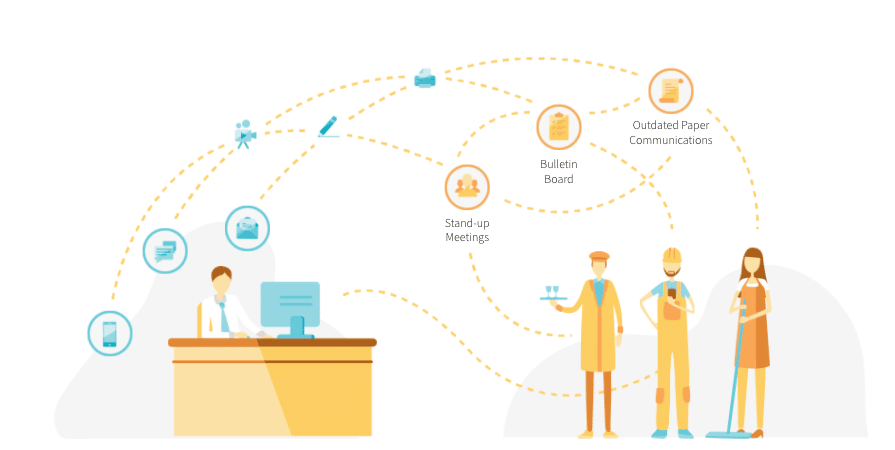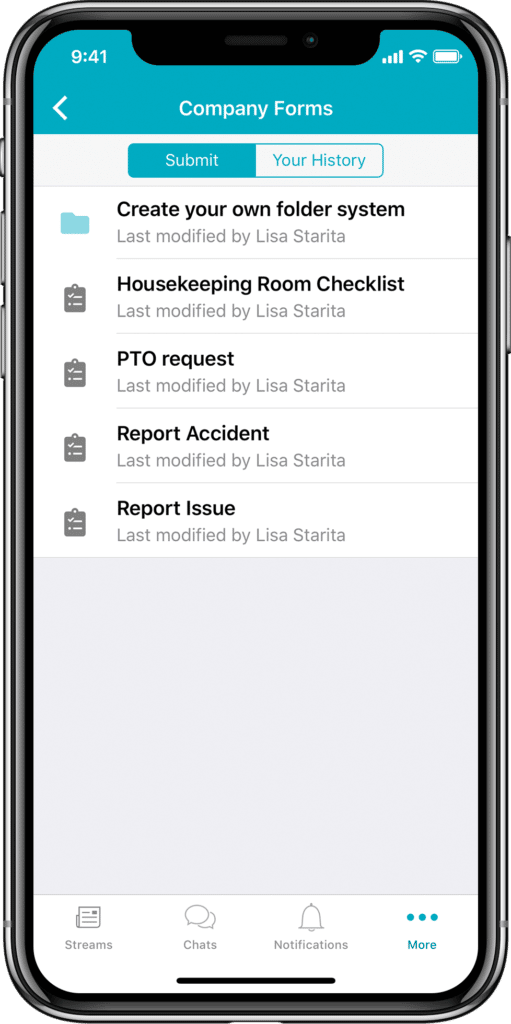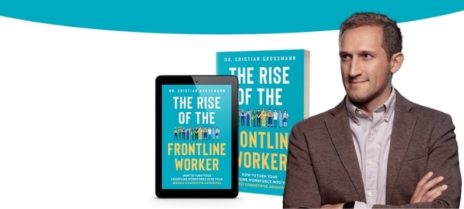Welcome to part three of our blog series where we unpack select themes from each chapter of my new book, “The Rise of the Frontline Worker.” Click here to read part one and here to read part two.
As inventor Dean Kamen once observed, “Every once in a while, a new technology, an old problem, and a big idea turn into an innovation.” This is precisely what’s occurring at companies around the world as they recognize the need to improve the experience of their frontline workers so they can be more productive, efficient, safe, agile, and ultimately happier in the workplace.
The incentives for organizations are varied. Research shows that engaged and involved employees, who feel their opinion is valued and important to their employer, will generally be happier and more productive than workers who aren’t engaged.
Recent research by the Oxford University’s Saïd Business School found that workers are 13% more productive when they’re happy.
A Mobile Workforce Requires Frontline-Optimized Solutions
When it comes to digital platforms, one size does not fit all. Digitalizing your frontline isn’t as simple as bringing frontline workers into your existing digital applications or platforms. Many digitalization projects are inherently flawed because organizations fail to recognize that the technical needs of their frontline workers and desk-based workers are often worlds apart.

If your frontline workers spend their time in the field, on the shop floor, at a retail store, or other onsite locations, a technology solution suitable for their desk-working counterparts might be of little use to them. What’s worse, when not properly equipped by their employers, many frontline workers will turn to consumer apps and other consumer platforms that are unfit for use within a professional context.
If organizations want to maximize the benefits of their digital tools and technologies, they should focus much more on what their frontline workers actually need. If organizations fail to do so, they face the hazard of workers improvising with consumer-grade platforms that can put companies at risk of breaching local data privacy legislation.
With that being said, let’s take a look at three major market forces contouring the shape of modern business that organizations should keep in mind when developing their digitalization initiatives.
1. The “Gig Economy” Is Here to Stay
We live in the age of the “Permanent Side Hustle.” Since the financial crisis of 2008, the rise of the gig economy since then has been astronomical, with Harvard Business Review stating that there are around 150 million workers in the U.S. and Western Europe employed as contractors. Predictably, gig work has become increasingly common during the COVID-19 pandemic as more traditional opportunities have been squeezed away by financial factors.
Gig workers include a very broad group of employees, but the term mostly refers to frontline workers such as app-based services like ridesharing and food delivery, shop workers, and tradespeople. Despite their snazzy, customer-facing user interfaces, many of the companies behind these app-driven services are still heaving mountains of paperwork around, using unwieldy onboarding protocols, or deploying digital systems better suited for desk-based workers.

When fully digitalized, communication with gig workers is faster, easier, and more effective.
2. The Global Workforce Is Aging
A 2017 report from the U.S. Senate predicted that by 2026, aging workers will make up nearly one-quarter of the labor force in the U.S. It’s likely to be a similar situation in many other parts of the world as well. This is a staggering statistic with serious implications for many industries, not least of which is manufacturing, which has a higher proportion of older workers than other frontline-majority sectors.
Research from the National Association of Manufacturers in the U.S. in 2019 showed that 78% of manufacturers are very or somewhat concerned about the aging of the manufacturing workforce.
Chief among the concerns of 97% of firms surveyed is the notion of “brain drain,” which can impact the collective knowledge of a workforce when older employees retire and take their expertise with them. Digitalization with a mobile app allows older frontline workers to share their knowledge and experience with younger employees, and provides a forum for new staff to ask senior employees questions. A mobile-friendly, collaborative knowledge base can start to bridge some of these gaps and make information readily available to everyone.
3. Data Privacy Regulation Is Getting More Stringent
The current wave of regulatory compliance such as the European Union’s General Data Protection Regulation (GDPR) is just part of a larger trend that will have a lasting impact on how companies manage the data of their customers and employees alike. With the regulations come steep penalties for non-compliance.

As legislation similar to GDPR continues to emerge across various regions throughout the globe, organizations will need to institute stringent data privacy protections independent of the regulations that govern where they or their customers are physically located.
Companies must ensure that their employees are communicating in a secure manner, using appropriate platforms as opposed to consumer-grade tools such as WhatsApp, for example, which is burdened by a host of regulatory issues.
Having access to a central knowledge repository is common among desk-based workers, but is not always available to the frontline. Providing frontline workers a means to gain instant access to mission critical information and bridge gaps in internal communications will prove paramount in the years ahead.
Overall, organizations that equip frontline workers with the right technology to do their jobs properly and enable fast, effective collaboration will fare vastly better than their competitors. By embracing frontline innovation and giving frontline teams access to tools that are clearly built for them and that meet and exceed their basic workplace needs, organizations will foster a happier, productive workforce.
My new book, “The Rise of the Frontline Worker” explores the critical significance of the modern-day frontline workforce, and unpacks why these essential employees will play a crucial role in the global economic recovery process. Get it now on Amazon!







